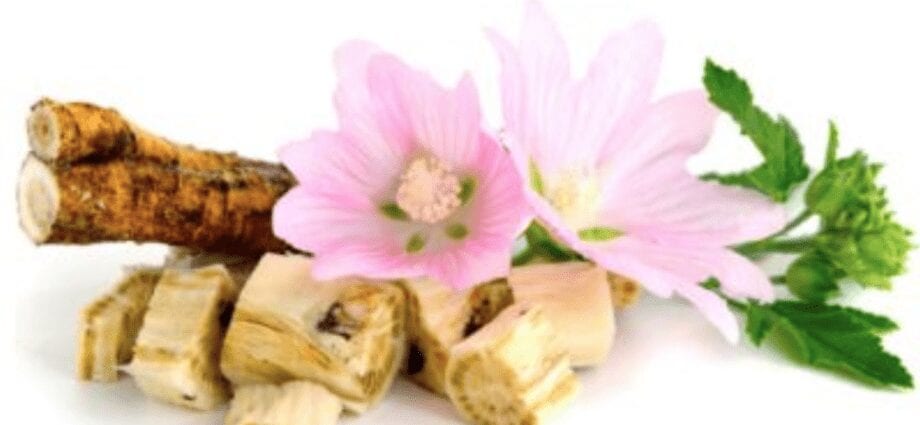Contents
SELF-TREATMENT MAY BE HAZARDOUS TO YOUR HEALTH. BEFORE USING ANY HERBS – GET CONSULTATION FROM A DOCTOR!
Description
Althea officinails officinalis is a perennial plant with a branched rhizome and fleshy roots. The stems are numerous. The leaves are round or kidney-shaped, strongly pubescent on the underside. Flowers with a whitish or pinkish corolla. Armenian althea differs from Althea officinails with deep three-, five-lobed leaves.
Althea officinalis is one of the species of the genus Altey, which are part of the Malvov family. Refers to perennial herbaceous plants. Growing area: Europe, Asia, North America and northern Africa. Main cultivation area: our country and Krasnodar Territory (Russia).
Prefers moist soil with a close location of groundwater. Therefore, it often grows in floodplains and wetlands.
Althea officinails usually has a height of 60 cm to 2 m. The leaves are rounded, arranged in tiers, the upper tier is velvety to the touch and more elongated. As a rule, there are several stems; solitary ones are less common. Attention is drawn to its beautiful inflorescences, for which the people received the name “wild rose”.
Flowers are collected in a spike-shaped inflorescence at the top of the stem. The flowers have 5 petals, are painted in pale pink, and the stamens are purple.
The Althea officinails herb blooms in June-July.
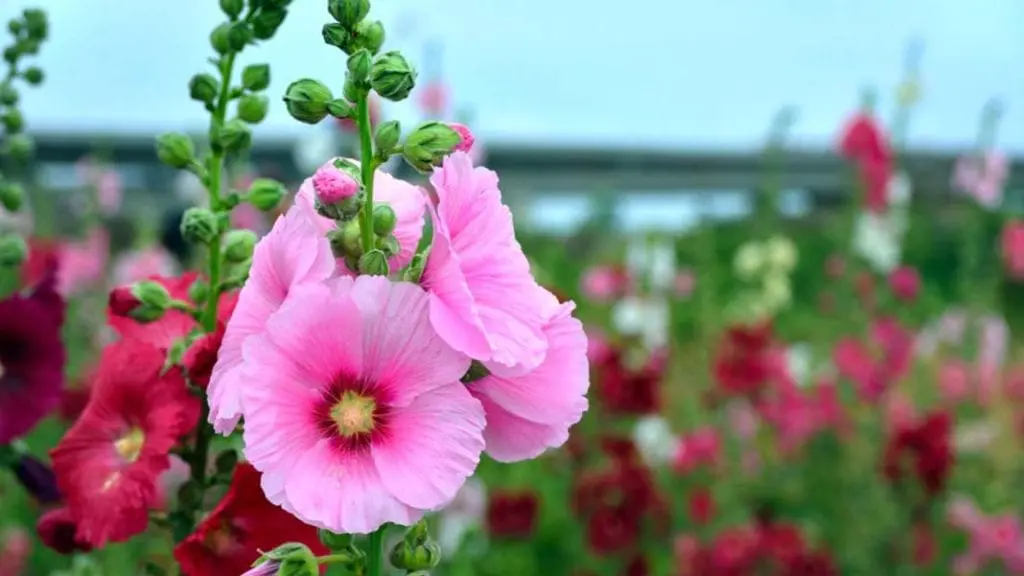
The main medicinal raw material is the root. Althea officinails roots have a multi-headed appearance. Numerous lateral branches of additional roots extend from the main root up to 50 cm long.
Composition
Althea officinails roots contain mucous substances (up to 35%), starch (up to 37%), pectin (10-11%), sugar, asparagine, betaine, carotene, lecithin, phytosterol, mineral salts, fatty oil (up to 1.7%) …
Benefits of Althea officinails officinalis
Althea officinails contains a high percentage of starch, pectin, carotene, fatty oils, lecithin, mineral salts, amino acids and a large amount of mucous substances. As a slimy plant, Althea officinails root is often equated with flax seeds.
Althea officinails roots have the following properties:
- accelerate and improve spontaneous tissue regeneration;
- stimulate and facilitate the process of expectoration;
- relieve inflammation;
- mitigate inflammatory plaque;
- envelop the irritated mucous membrane.
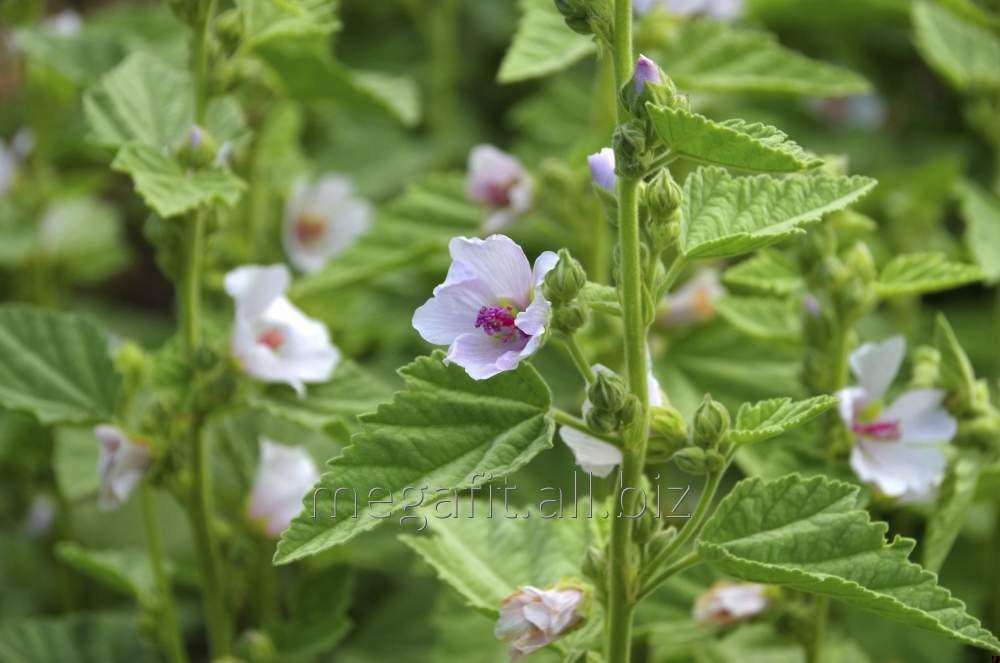
Altay is used:
as a regenerating and wound-healing agent for skin diseases;
as the most effective cough remedy;
as an emollient for sore throats, in particular for laryngitis;
for diseases associated with irritation of the mucous membrane of the gastrointestinal tract, Althea officinails root for the stomach serves as an excellent enveloping agent. Feature of the action: the effect is enhanced with an increase in the acidity of gastric juice;
in the fight against excess weight. Althea officinails root for weight loss is a very popular remedy. It has the ability to reduce appetite, create a feeling of satiety, and improve peristalsis.
Althea officinails facilitates the release of phlegm, reduces inflammation of the airways and throat. Therefore, it is used for bronchitis, pneumonia, whooping cough.
The enveloping properties of Althea officinails help relieve redness and irritation of the entire mucous membrane of the pharynx, which relieves and relieves itching in the throat, causing a convulsive cough. Therefore, an infusion of it is drunk with laryngitis, acute and chronic tonsillitis, sore throat.
Althea officinails roots in cosmetology
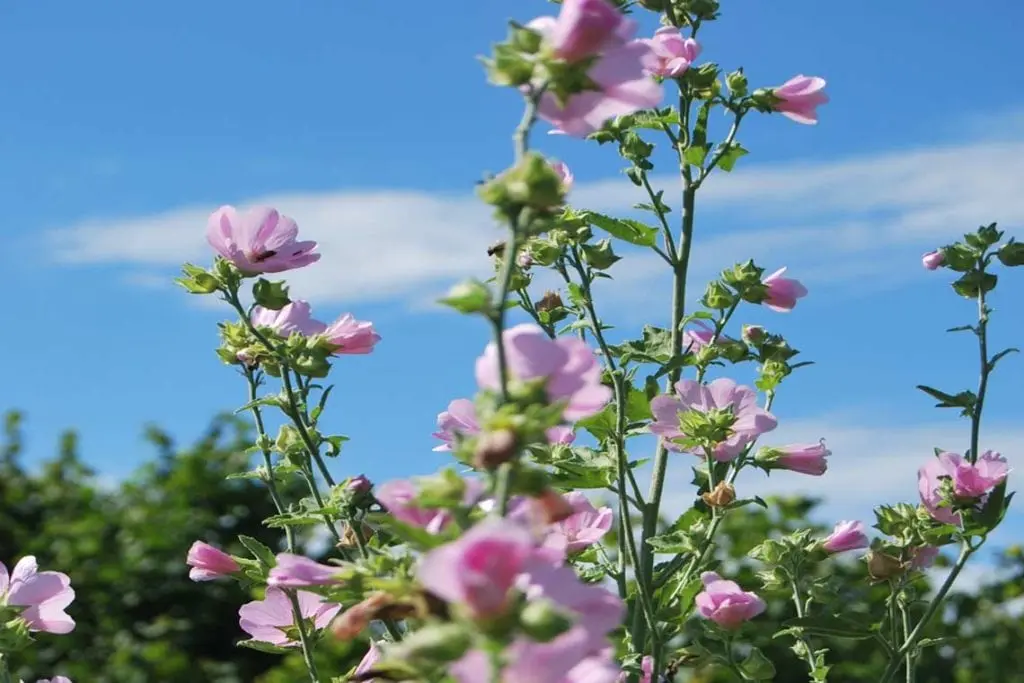
Althea officinails root is used not only in medicine, but also in cosmetology. It has a regenerating and moisturizing effect on the skin, relieves inflammation and irritation. Works well as a remedy for excessive dry skin
Althea officinails root for hair is used in the form of an infusion. It strengthens hair well, prevents hair loss and stimulates hair growth, relieves scalp irritation.
Infusion of Althea officinails roots for skin inflammation
To obtain it, two tablespoons of crushed dry roots of Althea officinails medicinal are poured with half a liter of boiling water. Insist one hour, then filter and squeeze out the raw materials. The resulting infusion is moistened with gauze and applied several times a day to the affected areas.
Infusion of Althea officinails leaves for flu and pneumonia
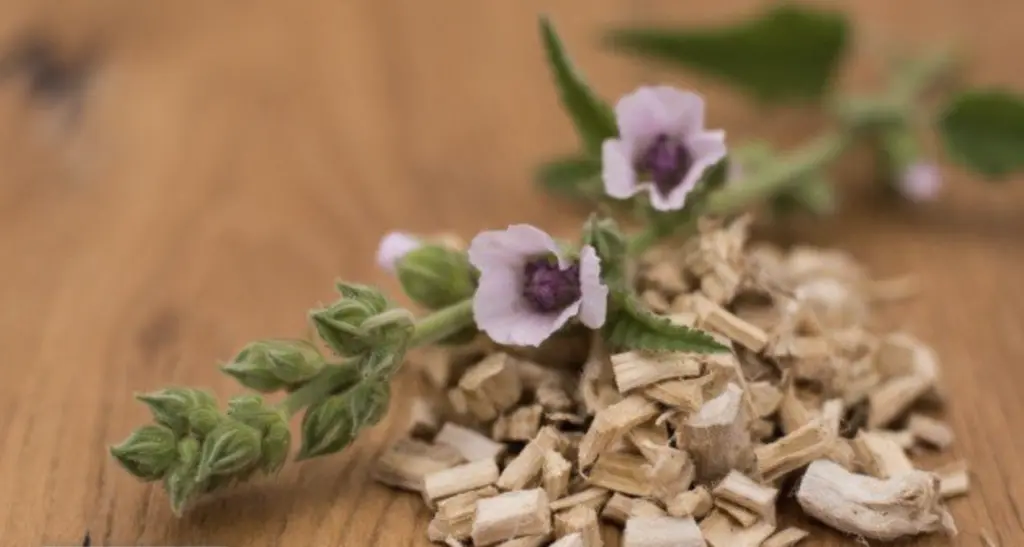
To obtain it, pour one tablespoon of crushed dried Althea officinails leaves with one glass of boiling water and leave for one hour. Then strain the liquid, squeeze out the raw materials. Take the resulting infusion warm in a quarter of a glass three to four times a day in small sips.
Infusion of roots, flowers or leaves of Althea officinails for rinsing
To obtain it, pour two tablespoons of roots, flowers or leaves of Althea officinails with two glasses of boiling water and leave for two hours, then strain, squeeze out the raw materials. Gargle with the resulting infusion, use it for compresses, poultices and enemas for inflammatory processes.
Contraindications
Taking medications from the roots or herb of Althea officinails medicinal is contraindicated in the first months of pregnancy, as well as in case of impaired respiratory function of the lungs, with chronic constipation, with advanced thrombophlebitis, varicose veins. Althea officinails roots do not need to be prescribed for a long time in case of exacerbation of pancreatitis, diabetes mellitus.
SELF-TREATMENT MAY BE HAZARDOUS TO YOUR HEALTH. BEFORE USING ANY HERBS – GET CONSULTATION FROM A DOCTOR!










